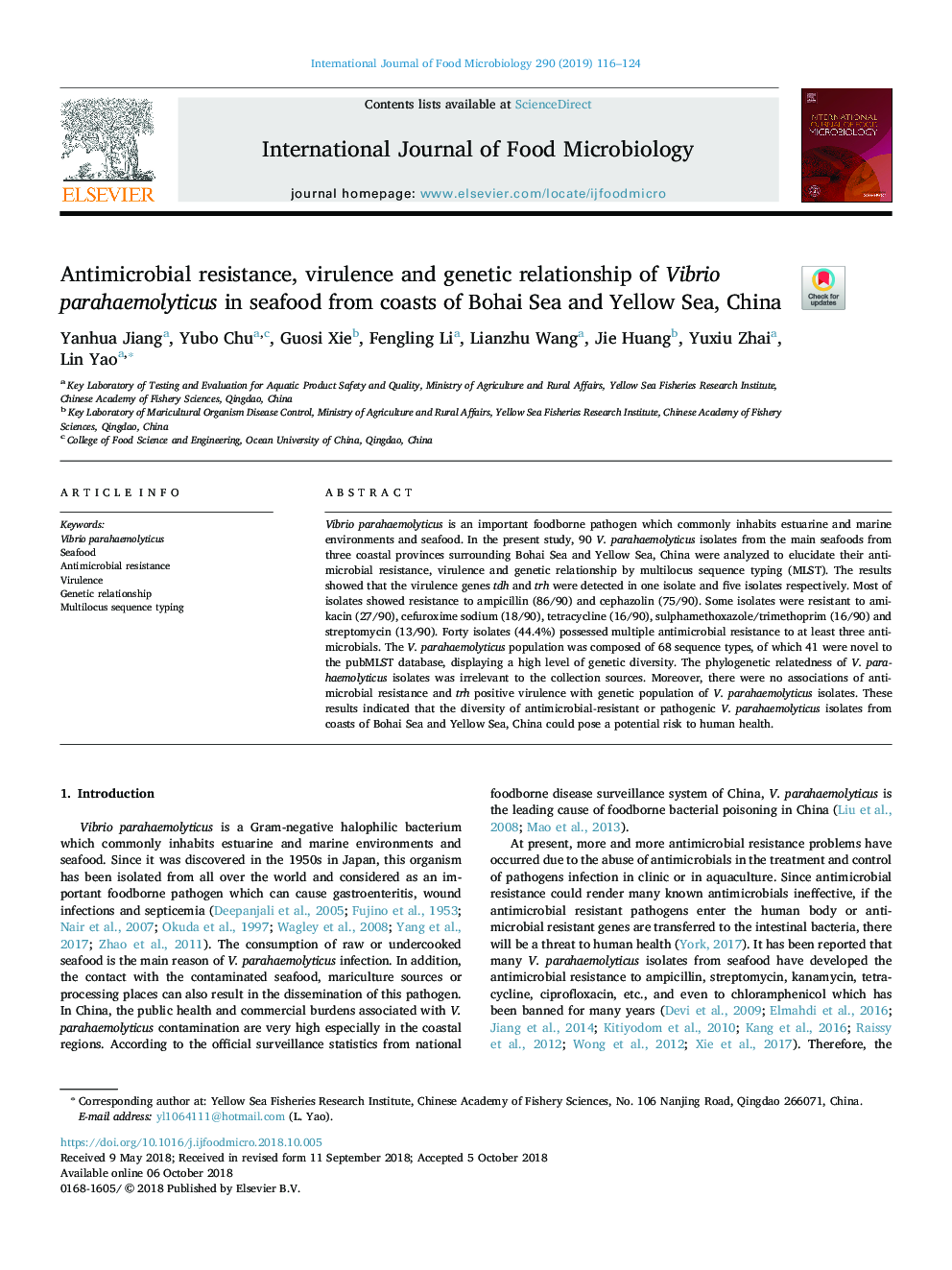| Article ID | Journal | Published Year | Pages | File Type |
|---|---|---|---|---|
| 11263183 | International Journal of Food Microbiology | 2019 | 9 Pages |
Abstract
Vibrio parahaemolyticus is an important foodborne pathogen which commonly inhabits estuarine and marine environments and seafood. In the present study, 90 V. parahaemolyticus isolates from the main seafoods from three coastal provinces surrounding Bohai Sea and Yellow Sea, China were analyzed to elucidate their antimicrobial resistance, virulence and genetic relationship by multilocus sequence typing (MLST). The results showed that the virulence genes tdh and trh were detected in one isolate and five isolates respectively. Most of isolates showed resistance to ampicillin (86/90) and cephazolin (75/90). Some isolates were resistant to amikacin (27/90), cefuroxime sodium (18/90), tetracycline (16/90), sulphamethoxazole/trimethoprim (16/90) and streptomycin (13/90). Forty isolates (44.4%) possessed multiple antimicrobial resistance to at least three antimicrobials. The V. parahaemolyticus population was composed of 68 sequence types, of which 41 were novel to the pubMLST database, displaying a high level of genetic diversity. The phylogenetic relatedness of V. parahaemolyticus isolates was irrelevant to the collection sources. Moreover, there were no associations of antimicrobial resistance and trh positive virulence with genetic population of V. parahaemolyticus isolates. These results indicated that the diversity of antimicrobial-resistant or pathogenic V. parahaemolyticus isolates from coasts of Bohai Sea and Yellow Sea, China could pose a potential risk to human health.
Keywords
Related Topics
Life Sciences
Agricultural and Biological Sciences
Food Science
Authors
Yanhua Jiang, Yubo Chu, Guosi Xie, Fengling Li, Lianzhu Wang, Jie Huang, Yuxiu Zhai, Lin Yao,
